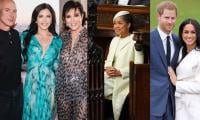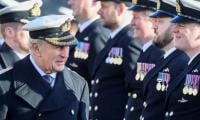Many people across the world were surprised by the recent riots in the UK that plunged a number of areas into chaos, with far-right activists unleashing a reign of terror in several regions by attacking mosques, asylum centres and immigrant homes.
The riots have triggered a debate about the role of social media in sowing disharmony, hatemongering, integration, the police system, multiculturalism, distortion of history, and underlying socio-economic factors, which paved the way for the violence witnessed following a stabbing incident on July 29.
On that day, a Taylor Swift-themed holiday club on Hart Street in the country’s Southport area was attacked, leading to three girls under 10 being killed and 10 other people being wounded After the incident, activists from far-right groups attacked a mosque; burnt vehicles; and damaged properties, besides staging violent protests. Counter-protests were held in several parts of the UK, leading to violence in some areas.
The government carried out swift arrests, with many rioters being sentenced. Many believe that the quick action of the government acted as a deterrent, preventing far-right groups from creating more mayhem. But critics say these prompt actions did not deter ultranationalists from staging protests in Belfast and some other areas of the country, suggesting that the state would also have to carry out some real socio-economic reforms to thwart reoccurrence of such incidents.
It is claimed that distortion of history and manipulation of facts is one of the factors contributing to such situations. Left-wing politicians accuse radical nationalists of employing these tactics to fuel hatred.
They argue that far-right ideologues like Stephen Christopher Yaxley-Lennon (known as Tommy Robinson) and Reform UK party leader Nigel Farage never bother to mention the contribution of immigrants towards the protection and betterment of British society. How many British people know about the tremendous sacrifices rendered by the people of the colonies during World War I and World War II for the UK?
Citing historical accounts, they claim over three million soldiers and labourers served the country during the two terrible conflicts of the 20th century. Some suggest even a higher number. For instance, according to colourfulheritage[dot]com, over four million soldiers from the Subcontinent alone fought during the wars.
Out of these soldiers, 1.5 million fought during World War I, which included 800,000 Hindus, 430,000 Muslims, 100,000 Sikhs, 55,000 Gurkhas and 115,000 others. At least 74,000 were killed while fighting for the empire, and 100,000 got injured. The empire did recognize their sacrifices to some extent, awarding 11 Victoria Cross medals to some of those fighting for the country.
Some historians claim that not only did the people of South Asia fight physically, they also made financial contributions, coming up with much-needed resources without which the fighting would have been an uphill task. It is estimated that the financial contribution was around GBP479 million, totalling to around GBP25 billion in today’s money.
During World War II, people from present-day India, Pakistan, Bangladesh and Nepal made even greater sacrifices, with around 2.5 million people participating in the war. Around one million Hindus, 600,000 Muslims, 150,000 Sikhs and 560,000 others fought along with British troops. Around 87,000 of them died during the war while 150,000 got injured. These countries also contributed GBP1.3 billion, which in today’s money amounts to a whopping GBP53 billion.
It is not only non-English historians or immigrants who make claims about their sacrifices, but British institutions also recognize such sacrifices. For instance, according to the National Army Museum’s website, over three million soldiers and labourers from across the British Empire and Commonwealth served alongside the British army during World War I. “Around 15,000 West Indians enlisted, including 10,000 from Jamaica. Others came from Trinidad and Tobago, Barbados, the Bahamas, British Honduras (Belize), Grenada, British Guiana (Guyana), the Leeward Islands, St Lucia and St Vincent.”
It says, “Soldiers from the Indian subcontinent (India, Pakistan and Bangladesh) made a decisive contribution to the struggle against the central powers. Two infantry and two cavalry divisions had arrived on the western front by the end of 1914 and eventually 140,000 men saw service there.”
Soldiers and labourers from these countries served across the world for the UK. “In 1915, Indian troops arrived in the Middle East, where they fought against the Ottoman Turks in Palestine and Mesopotamia (Iraq). That same year, soldiers from the Indian Army fought alongside British, Australian and New Zealand troops on the Gallipoli Peninsula. They also formed a large proportion of the Allied forces occupying former enemy territory in East Africa, the Balkans, Asia Minor and the Caucasus. In total 1.27 million Indians voluntarily served as combatants and labourers.”
The website also talks about the crucial role played by African soldiers in containing the Germans who were threatening British security. “African troops played a key role in containing the Germans in East Africa and defeating them in West Africa. Europeans and Indians struggled in the harsh African climate, but the local inhabitants had the skills to survive and prosper.
“By November 1918, the ‘British Army’ in East Africa was mainly composed of African soldiers. The units involved were the West African Frontier Force drawn from Nigeria, the Gold Coast (Ghana) and Sierra Leone, and the King’s African Rifles, recruited from Kenya, Uganda and Nyasaland (Malawi). At least 180,000 Africans also served in the Carrier Corps in East Africa and provided logistic support to troops at the front. Around 25,000 black South Africans were also recruited to the South African Native Labour Contingent that served on the Western Front in 1916-17.”
India offered the biggest military contribution to the British during these conflicts and within India, it was Punjab that made the largest contribution. For instance, according to Santanu Das, professor of modern literature and culture at Oxford University and a senior fellow at All Souls College, Oxford, “In 1914, India had one of the largest voluntary armies in the world. Of the 27,522 new recruits enlisted in India between August and Dec. 31, 1914, 13,400 were from Punjab alone. The total number of men to have served from Punjab, including the British districts and the Indian states, by the end of the war was 480,000, including 410,000 combatants and 70,000 non-combatants.”
“Of the 282,170 combatants recruited from Punjab from 1915 until 1918, some 156,300 were Muslims, some 63,900 were Hindus, and 61,970 were Sikhs, though the last religious group – the Sikhs – comprised only 12 per cent of the population. In August 1914, Punjab (including British districts and princely states) had 100,000 men in its armies, including 87,000 combatants and 13,000 non-combatants. By the end of the war, Punjab had contributed one-third of all the Indian recruits and over 40 per cent of the total number of Indian combatants mobilised.”
A project working on the role of Punjabis in World War I has digitized and transcribed the service records of approximately 320,000 Punjabis who served in World War I.
According to the BBC, during World War I, the British Empire and Dominions raised a total of 8,586,000 men for military service. “More than five million came from the British Isles, 1,440,500 from India, 629,000 from Canada, 413,000 from Australia, 136,000 from South Africa, 128,500 from New Zealand and more than 134,000 from other colonies.”
To be continued
The writer is a freelance journalist who can be reached at: egalitarianism444@gmail.com















